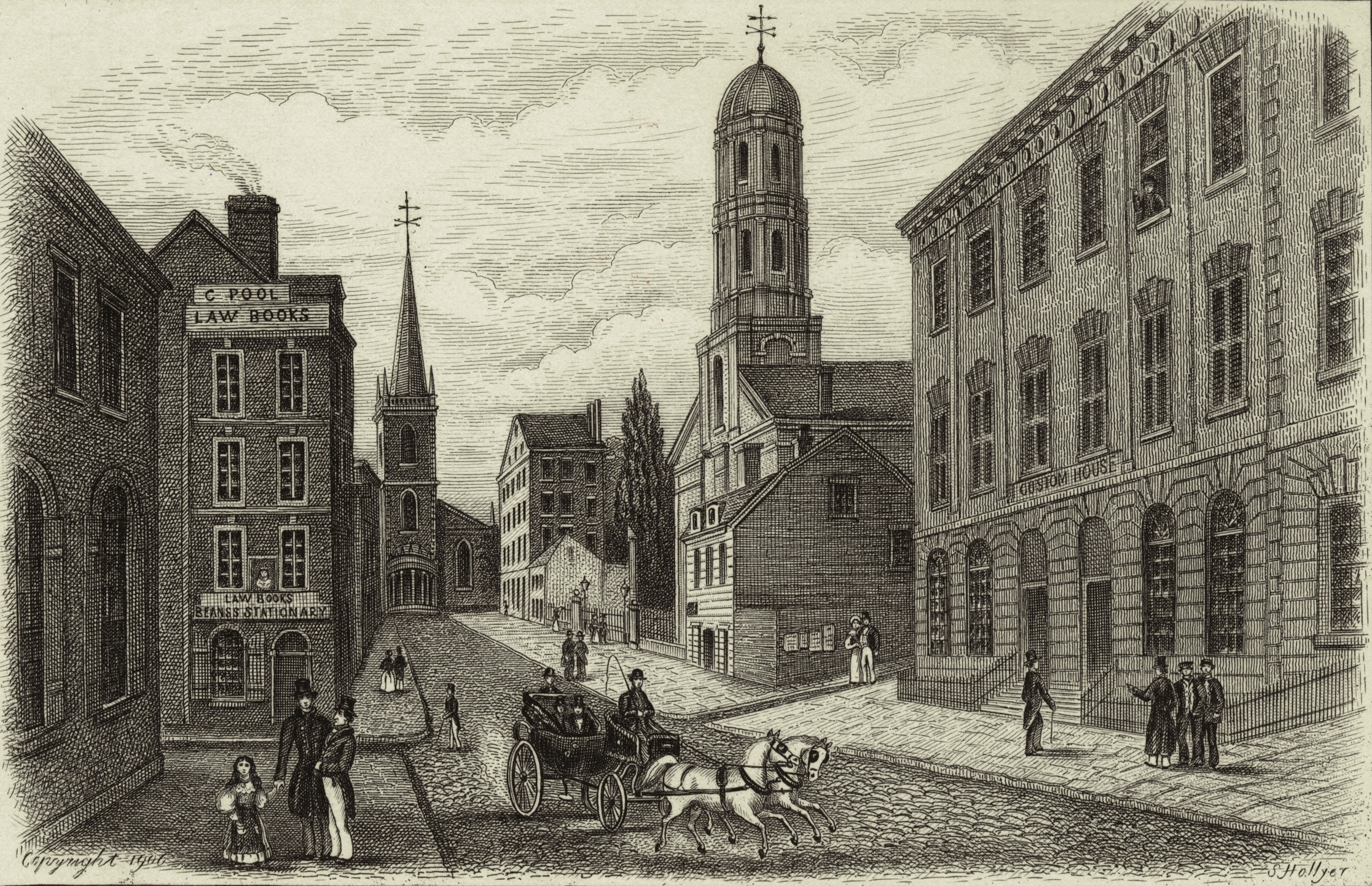Black Gotham Stories
Merchant Princes
Knickerbocker families owned vast plantations along the Hudson River, but with the passage of time they turned their sights on Lower Manhattan where the men devoted themselves to building up the city’s trade and manufacture. In the late eighteenth century, shipping dominated New York’s economic activity as vessels flooded the East River. The most lucrative trade was without doubt the China and East India trade which brought fabulous wealth to those who engaged in it. Abiel Low, father of future Brooklyn and New York mayor Seth Low, began as a clerk with Russell &Co before branching out on his own and founding the prestigious firm, A.A. Low and Brothers, which traded in tea and silk. But even his wealth paled in comparison to that of John Jacob Astor. The son of a butcher from a small town in southern Germany, Astor emigrated to the United States in 1784, married into a Knickerbocker family, and began business in the fur trade. In the mid-1790s, he turned to the China trade, shipping out otter, beaver, and fox skins and bringing back tea, silk and porcelain. Ten years later, he was building his own ships and was well on his way to becoming a millionaire. Merchants often chose to resell their goods at auction houses such as the one run by the Hone brothers. There is where Philip Hone made his fortune before choosing to enter politics and serve as New York’s mayor for one term.
Not all traders were able to hold on to their wealth. Descendants of French Hugenots, John Pintard went into the China and East India trade, only to lose his entire fortune when he endorsed notes for over a millions dollar in support of Alexander Hamilton’s plan to fund the federal debt. He was forced to declare bankruptcy and spent time in debtors’ prison. Yet, even though he was never able to recover his fortune, Pintard remained an influential figure in the city and helped to found the New-York Historical Society.
Philip Hone
Other New York merchants profited handsomely from slavery by buying and selling goods produced by slave labor from the West Indies and the southern United States. Some imported sugar, molasses, and rum, coffee, and cocoa from the West Indies which in turn gave birth to a host of local industries—distilleries, sugar refineries, etc. Others, like the Lorillard father and sons, bought tobacco from southern states. A French Huguenot, Pierre Lorillard settled in New York in the mid-eighteenth century and became an importer, manufacturer, and seller of tobacco and its related products. Initially, he purchased tobacco from the South and then resold it at auction, but eventually gave up trade to go into snuff manufacture. After his death, his sons Peter and George took over his business, adding add cigars to their list of products for sale; Peter even patented a machine for cutting tobacco. A third brother, Jacob, went into the leather tanning business. Although he did not invent a machine as had his brother Peter, Jacob understood the importance of technology. Ahead of his competitors, he was the first to introduce a new rolling machine that improved the drying of hides. All three brothers accumulated vast fortunes and two of them, Peter and George, established important ties with New York’s black community.
Knickerbocker families soon realized that they could increase their wealth not only through trade and manufacturing, but also through the monopoly of landownership, control of the real estate market, and speculation on the city’s increasingly valuable property. Most of Lower Manhattan from Broadway to the East River was owned by Trinity Church and six old Knickerbocker families. They had built their original homes, manufactures, and stores on this land, but now began laying out and paving new streets. Other families joined in. Astor bought lots on the East River waterfront; the Lorillard brothers acquired property in the areas where their manufactures were located, Jacob on Ferry and Gold Streets, Peter and George on Chatham Street. In fact, these men bought land on just about every street in Lower Manhattan which they then divided into lots to sell, lease, or build properties for rent—all at great profit.
When not at work, New York’s merchants could be seen scurrying down to Wall Street to banks which held their money and extended credit to them, or to the Stock Exchange Office, built in 1792, where they dealt in stocks. Or they could stop at Tontine’s Coffee House, opened shortly after the Stock Exchange, at the corner of Wall and Water Streets, for more wheeling and dealing and perhaps some fellowship. If they decided to eschew business for an evening, they could visit Shakespeare Tavern, a favorite haunt of New York’s literati and frequented by Washington Irving, to converse with poets and other writers. Sunday would find them attending church with their families, often at Trinity Church located at Broadway and Wall Street. Chartered under the British in 1697 as part of the Anglican Communion, Trinity became part of the Episcopal Church after Independence. It was the place of worship of many of the city’s elite, including the Lorillards.





